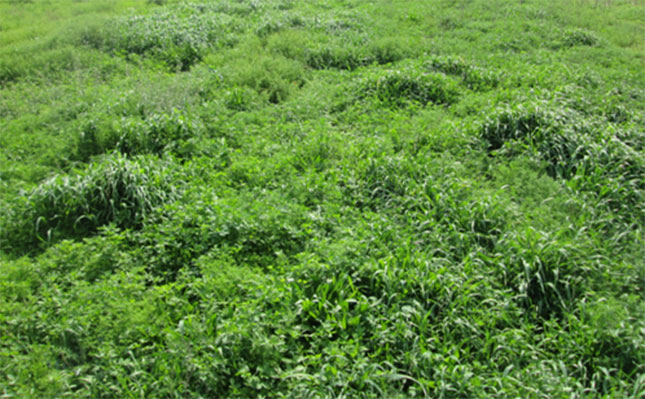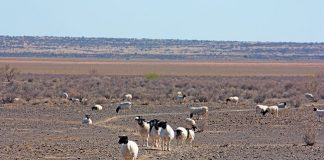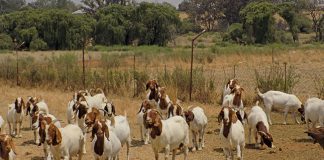
I am involved in a number of mentoring programmes among communal farming groups. Many of these farmers are very poor and funding is scarce.
They have no access to tractors or implements to help them produce forage in times of grazing scarcity. This results in low reproduction rates and forces the farmers to buy in feed, both of which exacerbate their financial situation.
Faced with this challenge, I was forced to be innovative and consider some options that went against accepted agricultural practice.
I spoke to several crop experts about the possibility of planting a mixed crop of rye grass, lucerne and clover without any mechanisation, soil preparation or expensive fertiliser. In addition, I wanted to know if hard, capped ground could be used as a seedbed.
The responses ranged from, “I don’t think that will be possible” to “That will never work”. The general opinion was that feed crops require a finely tilled seedbed to thrive.
Successful planting on hard ground
Despite this, I decided to start a trial on a small piece of land on my property that had been left fallow for some years and was rock hard. Winter had arrived and the ground was covered with dead weeds and dying couch grass. I discovered that successful small-scale feed crop planting can be undertaken without ‘mechanisation’. Here is the method I used:
- Collect 40kg bags of kraal manure comprising partly dehydrated sheep and/or goat manure, or finer cow manure.
- Lightly irrigate the ground where you want to plant the mixed seed. Depending on the size of the land, this can be done with a garden sprayer, or you can install a relatively cheap watering system using sprinklers and piping available from a co-op.
- Sow the seed by hand onto the moist ground between any dry weed stalks and onto any short grass cover. Note that this should not be too long or thick. Spread the seeds evenly, so that they lie about 2cm apart. If you can, try to do this on a calm day, as wind will hamper the sowing of the seeds.
- Trample the seed into the moist ground yourself or walk livestock to and fro over the seeded area.
- Empty the bags in heaps in straight rows about 2m apart. The manure heaps should about 2m apart in the row.
- Rake the heaps to cover the seeds with a thin layer of manure (about 2cm thick).
- Irrigate the manure covering and trample again to lightly compact the surface.
- Irrigate the land well once a week and see the crop thrive. More irrigation may be needed during very warm weather.
Some soil types may require certain nutrients, but the kraal manure should go a long way to meeting these needs.
If you don’t want to go through the process of testing your soil for nutrient deficiencies, plant a small test area of a few square metres following the steps described above to check if the crop will grow.
Seed mixture for a long-lasting crop
The seed mixture I used comprised 45% Bronsyn perennial rye grass, 45% SA Standard lucerne and 10% white clover. If grazed responsibly and allowed enough rest to recover, this crop can last for six or seven years.
If you prefer, you can cut the crop by hand and feed it to your livestock, allowing the crop to regenerate before the next cutting. Rye grass and clover require more water than lucerne, so you can consider planting only lucerne. I have also planted barley and oats successfully in this manner, but these crops must be planted each season.
Sheep, goat and cattle manure consists of vegetable matter. This forms a thatch-like covering that helps to retain the moisture in the soil and so cuts down on the watering required. The soil on my property is somewhat clayish, but each time we add manure onto the seeded areas, the ground becomes mulchy, leading to good crops.
Never allow the crop to become completely dry as this harms the plants. Rye grass in particular does not recover well. Also, never allow livestock to graze on green lucerne as this could cause gastric bloat.













